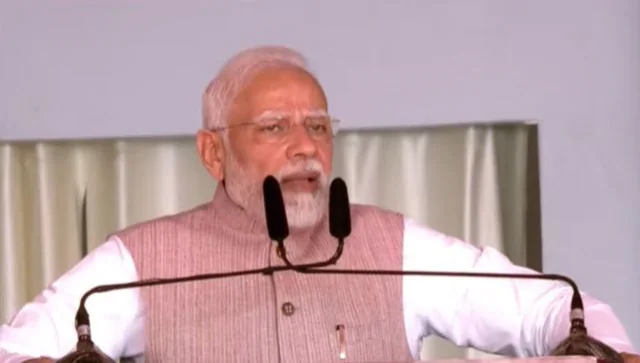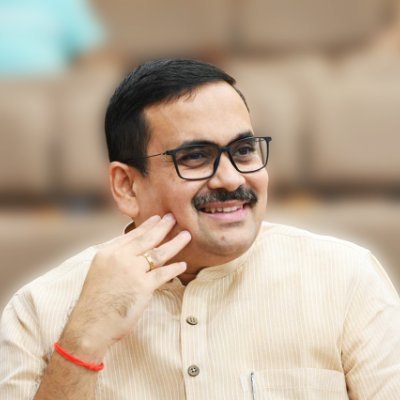It is only those driven by vulture politics, who are emitting hyena-laughs over the tragic Morbi bridge collapse and see in it an opportunity to politic over tragedy
No one can equal Prime Minister Narendra Modi’s attachment to Morbi and to its people. His attachment is organic and umbilical. To understand Modi’s attachment and connection to Morbi, an attachment that is and can never be ruptured, one will have to look back forty-five years at a 29-year-old RSS pracharak who rushed to Morbi and led one of the most organised and successful relief operations in the history of Gujarat till then.
On 11 August 1979, Morbi was flooded after the dam on Macchu river gave way. About 25,000 people died and relief operations that were initiated were uncoordinated in face of the magnitude of the disaster. “What appears to have stood out in this relief operation”, writes Ajay Singh in an admirably documented, argued and explained book “The Architect of the New BJP: How Narendra Modi Transformed the Party”, “was the focused approach of a team of RSS volunteers led by a young pracharak known as Narendra Damodardas Modi.
When the dam broke, Modi was in Chennai along with Nanaji Deshmukh”, one of the tallest leaders of the erstwhile Jana Sangh, then heading the Deendayal Research Institute, and “on hearing news of the large-scale destruction” Modi “immediately rushed back to Gujarat and organised the relief operations.” And “unlike the confusion and chaos that often characterise relief operations, the assistance by RSS volunteers was quite methodical and clinical”.
The areas “adopted by these volunteers saw rehabilitation of the victims at quite a rapid pace as they started picking up the threads of their lives. Notably some of these localities had substantial Muslim population too.” Besides overseeing a clinical relief effort, a young Modi also organised a letter movement, in which letters would be dispatched to every house in Morbi telling the people that they were not alone, that together the entire town would be rebuilt and regain its former self. Besides physical mobilisation of relief, Modi infused mental strength and restored the sense of resilience and the balm of solace in that trying and challenging climate.
Twenty-two years after that exemplary relief mobilisation in Morbi, Modi, as chief minister of the state, undertook one of the most unprecedented relief and rebuilding of earthquake-ravaged Kutch. That in itself remains an unparalleled saga of people-oriented, people-centred and people-driven governance. After Morbi, it was Kutch that saw Narendra Modi’s energies, his unity of purpose, his indomitable will, his iron determination and his vision for the long-term good unleashed. As Ajay Singh notes, Modi, “launched a massive rehabilitation programme in the earthquake-hit” Kutch and Saurashtra, and “started rebuilding the Bhuj district headquarters from scratch. He channelised all energies of the government, the party and society to rebuild Bhuj, like the proverbial Phoenix rising from the ashes.” One of the most comprehensive rebuildings perhaps to have been undertaken anywhere post-Independence was in Kutch by Modi.
The deeper symbolism for resurrection of Kutch lay in Modi spending the Diwali that year in Kutch and it found expression through Modi’s multi-pronged approach to rebuilding the area. The earthquake had left 20,000 dead and tens of thousands injured with twelve lakh homes damaged and 6 lakh people homeless. Modi left for Gujarat and plunged into relief work. A former army chief, who was pressed into that sector as a senior officer, could vividly recall, over two decades later, how he saw Modi, not yet chief minister then, present every-day in ground zero, directing and coordinating relief work. Hundreds of karyakartas and leaders who formed part of that relief work, pressed into work with specific responsibilities by Modi, continue to recall the difference and determination that he breathed into that massive and herculean relief work.
Recalling this unprecedented relief and reconstruction initiated in Kutch, PK Mishra, then principal secretary, Agriculture, in his book on the subject, writes, for instance, how, “Rescue and relief operations were undertaken on a massive scale. The transition from relief to reconstruction was brief. A holistic and comprehensive reconstruction and rehabilitation programme — possibly the largest ever introduced—was put in place within a short time.”
“The scale of the rescue and relief operation was unprecedented,” recalled Mishra, adding: “In the days and months that followed, a holistic and comprehensive reconstruction and rehabilitation programme was put in place. A new organisation, the Gujarat State Disaster Management Authority (GSDMA), emerged. Its performance was widely acclaimed both nationally and internationally.” With Modi taking over the reins, it was the first ever such body to be created in India. The Union government would form the National Disaster Management Authority only in 2005, having followed Modi’s successful implementation of Kutch’s reconstruction and rehabilitation.
“The spectacular progress of implementation of the programme, in terms of its size and quality,” writes Mishra, “was widely acclaimed by international experts and multilateral agencies. The GSDMA received the Sasakawa Award Certificate of Merit in October 2003, based on its performance during a short period of two and a half years. In April 2004 it also received the Green Award from the World Bank for incorporating and effectively implementing environmental aspects with the reconstruction efforts. On 27 October 2004, an international conference with about 400 participants was held in Singapore. Here, the GSDMA received the Gold Award, which is the highest award of the CAPAM for ‘Innovation in Governance’. The award committee observed that the massive earthquake rehabilitation and reconstruction programme was a paradigm shift from the conventional three approaches of response, post-disaster mitigation and preparedness. Each of the various initiatives like the owner-driven reconstruction programme, the role and involvement of the community, the transparency and equity procedure, and various capacity-building initiatives taken up during the programme was regarded as innovation in governance by itself.”
The Kutch turnaround has already gone down in history as a one-of-its-kind rehabilitation and rebuilding with a few parallels in the annals of the history of disaster management. Yet, the story has not been amply narrated and disseminated, primarily because it has no parallel, cannot be debunked or questioned and because it stands testimony as one of the earliest examples of Modi’s will for transformative governance.
While swift and immediate action has been initiated in the Morbi bridge collapse tragedy, and accountability is being fixed, in states like West Bengal the Trinamool Congress’s record of disaster management is disastrous. Accountability is never fixed; targets are never met, while under construction bridges collapse in the centre of the metropolis and wheeler-dealers are never brought to account because they owe allegiance to the ruling party. The AMRI Hospital fire tragedy that saw 92 patients burnt alive in December 2011 in Kolkata has still not seen the perpetrators brought to account and responsibilities fixed and action initiated.
Due to the state’s poor preparedness and the West Bengal government’s refusal to come up with a credible disaster relief plan and structure, the Amphan cyclone that hit West Bengal in 2021 saw a number of lives lost and devastated. To rub salt on wounds, relief meant to be distributed to the Amphan victims were all gobbled up by TMC’s apparatchik. Concrete houses that withstood the cyclone’s hit received compensations, while those whose mud huts were washed away continued to live on the roads, with their relief being siphoned off by TMC’s self-serving leaders at all levels. The Mamata Banerjee government’s record in handling Covid and in handling the repeated dengue epidemics that is wreaking havoc across West Bengal, with a number of deaths across Kolkata and other districts has been a criminal abdication of its governance responsibility. With one of the worst records of disaster management, West Bengal’s example stands in stark contrast to Gujarat’s and to a number of other states, which have decided to seriously course-correct and absorb the new paradigm of disaster management that Prime Minister Modi has insisted upon and encouraged.
It is only those driven by vulture-politics, who are emitting hyena-laughs over the tragic Morbi bridge collapse and see in it an opportunity to politic over tragedy. These elements thrive on exploitation and extortion and their politics rests on bartering away lives. But the overwhelming others, who accept and recognise the rise of a “New India”, rest their faith in Modi, whose unbroken record of overcoming challenges and disasters continue to instill hope and resilience in them.
The writer is a member of the BJP national executive committee, and director of Dr Syama Prasad Mookerjee Research Foundation, New Delhi. Views expressed are personal.
Source: https://www.firstpost.com/opinion-news-expert-views-news-analysis-firstpost-viewpoint/oppositions-vulture-politics-over-a-tragedy-recalling-modis-organic-and-umbilical-attachment-to-morbi-and-its-people-11551121.html
(The views expressed are the author's own and do not necessarily reflect the position of the organisation)


